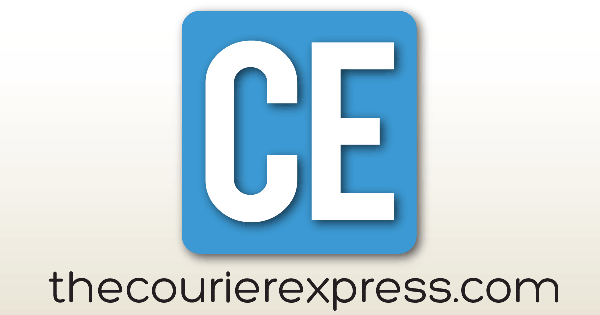
Organization chart showing hierarchy structure of teams in corporation with CEO, directors, … [+]
In a world increasingly shaped by AI and automation, forward-thinking organizations are restructuring their workforce through podding—a decentralized approach that emphasizes small, autonomous teams with dedicated team leaders. This shift, used by companies like Spotify, is gaining traction as research from cognitive neuroscience and evolutionary biology reveals how humans naturally perform best in smaller groups. Could podding be the next evolution in organizational design, combining the best of collaboration with the efficiency of technology?
What is a Pod, and Why Are They Gaining Attention?
Podding is a team-based organizational structure in which companies break down their workforce into smaller, cross-functional groups, or “pods.” Each pod operates with a high degree of autonomy, often with its own team leader responsible for coordinating efforts and aligning with the broader organizational mission. This model contrasts with traditional hierarchies where middle managers often act as gatekeepers for information and decision-making.
The rise of AI has accelerated interest in podding by automating many of the administrative tasks once handled by middle managers, such as performance tracking, scheduling, and reporting. This frees leaders to focus on guiding team performance and innovation.
The Biology of Behavior: Why Pods Work
The biological basis for podding is rooted in how humans are wired to collaborate in smaller groups. Anthropologist Robin Dunbar’s research suggests that humans can only maintain stable, meaningful relationships with around 150 individuals, with optimal working groups even smaller—closer to 5-15 members. This group size reflects the capacity of the human brain to manage social complexity effectively.
Neuroscientific research supports this as well. Oxytocin, often called the “trust hormone,” is released during positive social interactions, fostering psychological safety and collaboration in smaller teams. Mirror neurons, which help individuals empathize and understand the emotional states of others, are also more effective in smaller, closely-knit groups. These biological mechanisms help explain why smaller teams often exhibit greater cohesion and creativity.
How AI is Redefining the Role of Middle Managers
AI-driven tools are automating routine tasks historically assigned to middle managers, including performance metrics analysis and reporting, scheduling and task management, and workflow optimization. As a result, the middle manager’s role is shifting from administrative oversight to human-centric leadership—focusing on emotional intelligence, coaching, and team alignment rather than task supervision.
Why Pods Could Improve Performance and Innovation
Cognitive diversity and psychological safety are critical components of high-performing teams. Small, autonomous pods often foster both by creating environments where diverse perspectives are shared more freely, team members feel safer expressing ideas and taking creative risks, and decision fatigue is reduced by distributing responsibility more evenly.
Research also suggests that small teams can be more adaptable in rapidly changing environments. By decentralizing decision-making, pods can respond to challenges with greater speed and flexibility compared to rigid hierarchical structures.
Pods Require Specific Leaders Skills
As the role of team leaders evolves in pod-based structures, a different skill set becomes essential. Emotional Intelligence (EQ) helps leaders manage emotions, build trust, and facilitate collaboration. Coaching and mentorship shift the focus from task management to skill development and growth. AI literacy equips leaders to leverage tools for data-driven decision-making. Systems thinking ensures alignment with broader organizational goals. These human-centric leadership skills are critical for pods to thrive in an AI-augmented work environment.
Real-World Examples of Pods in Action
Spotify’s Squad Framework is a well-documented example of podding. The company organizes its workforce into small, autonomous squads responsible for specific product features, with minimal oversight from traditional management layers. Similarly, IDEO, a global design firm, uses small, project-based teams to drive innovation across various industries.
Spotify icon displayed on a phone screen is seen in this illustration photo taken in Krakow, Poland … [+]
Could Pods Work in Large Organizations?
While podding is effective for many tech and creative firms, applying it to larger, more complex organizations poses challenges. Coordination across pods requires clear communication channels, shared knowledge systems, and strong leadership at the organizational level to align pods with broader strategic goals. Training team leaders to manage autonomy while ensuring accountability is also crucial.
However, with the right structure and leadership development, podding can scale effectively. Firms like Haier and W.L. Gore have successfully implemented pod-like structures, proving the model’s adaptability across industries.
Key Questions for Leaders
- How can podding help your organization balance autonomy with strategic alignment?
- Are your team leaders equipped with the emotional intelligence and coaching skills needed for a pod-based structure?
- What role can AI play in reducing administrative tasks, allowing leaders to focus on human-centric leadership?
- How does your current team structure support cognitive diversity and psychological safety?
- What steps can your organization take to experiment with podding on a smaller scale before scaling it across the enterprise?
Podding represents more than just a management trend—it’s a biologically informed approach to organizational design. By aligning team structures with the way humans are wired to collaborate and empowering team leaders with the skills needed for coaching and emotional intelligence, organizations can unlock both innovation and resilience. As AI continues to reshape the workplace, podding offers a compelling model for balancing technology with human potential.
link






